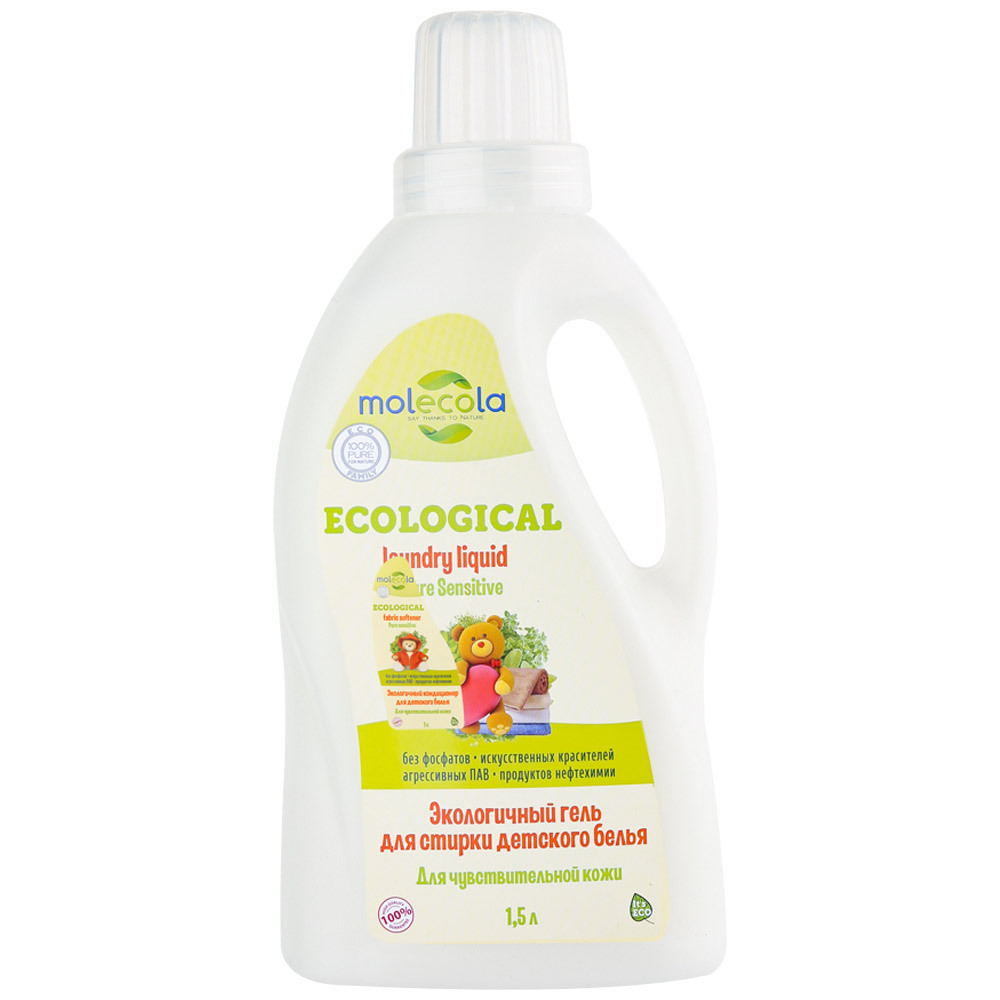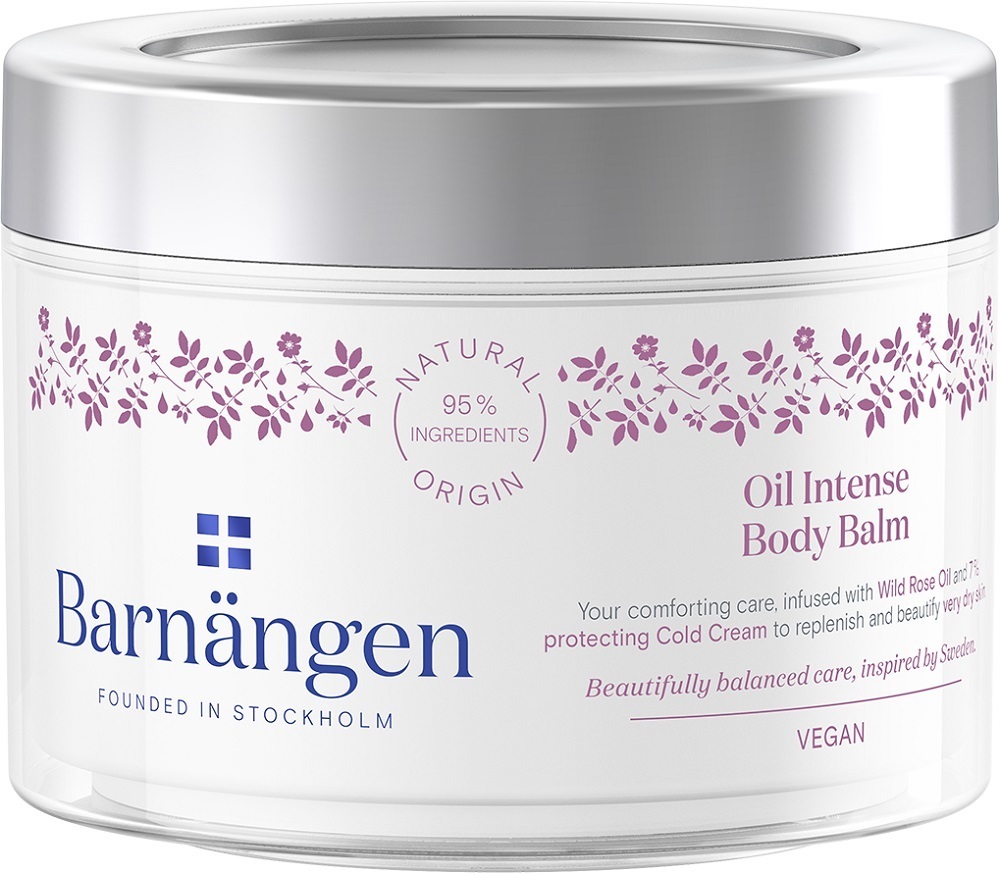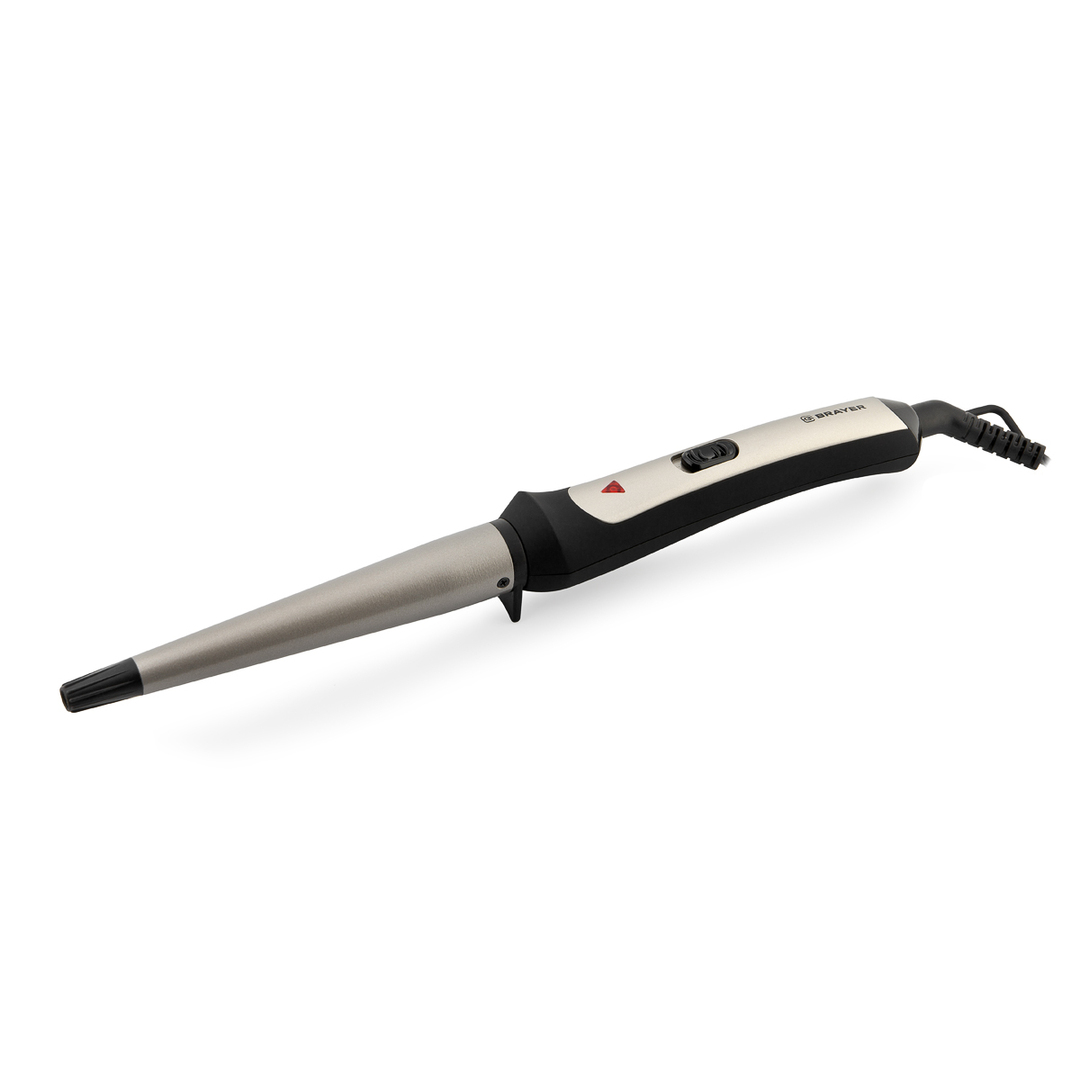In construction and related work, expanded clay is widely used. It is a processed mixture of granules that have become the product of firing clay or similar materials. Ideally, each granule should be an even, porous, brown bead. In this case, the inside of the material is darker. Expanded clay helps with a variety of construction work. Let's consider the main properties of expanded clay and what it is made of.
Composition and characteristics

The main component of expanded clay is clay or shale. The firing method creates neat balls from them. For this, special heaters are used that increase the temperature of the clay to 1000 degrees. At this point, the material turns into a solid ball with a porous structure.
All properties and characteristics of the mixture depend on the starting material, the order of formation and the quality of the equipment used. All this affects the technical performance of expanded clay as such. Among all the final characteristics, the greatest curiosity is caused by the size of the granules, their density and weight. All other parameters in one way or another come from here.
For any expanded clay, parameters clearly specified in the regulatory documents are provided. This is done so that exactly the fraction that is needed is used during the work. But not all important characteristics of the material are presented there. Therefore, it will not be superfluous to analyze each characteristic in more detail.
Fraction
The size of the granules that make up the mixture. There are three main categories:
- small (from 5 to 10 mm);
- medium (from 10 to 20 mm);
- large (from 20 to 40 mm).
But it is worth noting that construction expanded clay is placed in a special category, in which granules ranging in size from 2.5 to 10 mm are used. This also includes mixtures of 5 - 20 mm, which are multifunctional fractions.
Bulk density
There are seven grades for bulk density, which are used for different jobs. This characteristic determines the density of expanded clay, excluding the voids and gaps between the granules.
Strength
There are many strength fractions. They include both gravel materials and crushed stones. Strength is directly affected by the density of the material. The higher the density, the stronger the fraction.
Compaction factor
The parameter characterizes how much the material will shrink during transportation, storage, how exactly the expanded clay will be affected by different loads and similar subtleties. Typically, the compaction ratio is no higher than 1.15. The coefficient is widely used during the sale and delivery of the material to the consumer.
Thermal conductivity
An important indicator that is responsible for how effective the heat-conducting properties of the material as such are. There is no wide spread, since any expanded clay is effective in this matter.
Important! The higher the density of the material, the higher the thermal insulation properties.
Moisture absorption
The indicator characterizes the degree of water absorption into the material, as well as changes in its properties after exposure to moisture. Expanded clay is a material that is not afraid of moisture in an average amount. The moisture absorption index does not exceed 20%.
Noise isolation
Expanded clay is effective in terms of sound insulation. Especially when combined with wood. But sometimes, to achieve an excellent result, you may need to use additional insulation.
Frost resistant
Since expanded clay absorbs a little moisture, it is quite resistant to frost. At the same time, even at very low temperatures, the material does not lose its properties.
Features of manufacturing technology
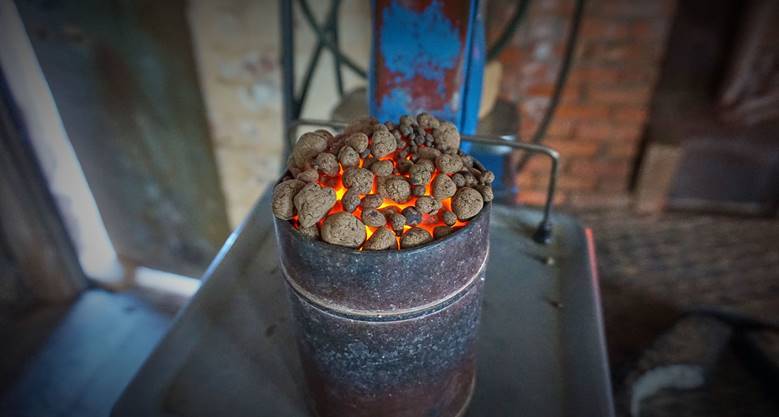
For the formation of expanded clay, material is required that has the following qualities:
- volume change during firing;
- fusibility;
- strength.
To facilitate the swelling process, additional components can be added, among which fuel oil, diesel fuel or perlite can be distinguished.
Granules of a certain size with set characteristics are formed. They are then dried and fired to give strength and hardness. After firing, all granules must be thoroughly dried.
In the production process, special attention is paid to sorting. It includes work on the separation of granules by size, as well as the division of large fractions into smaller ones. Upon completion of all procedures, expanded clay is packed in bags or bags and prepared for shipment.
Thus, expanded clay is obtained as a result of swelling of the clay structure, which turns into porous granules with a hard shell.
Extraction of raw materials
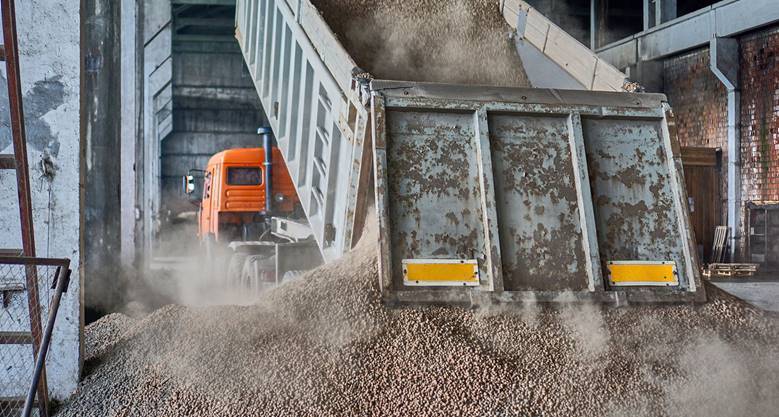
Clay, from which expanded clay is usually made, is a raw material, the extraction of which has a fairly standard appearance. With the help of technology, raw materials are extracted from the quarries and loaded into trucks.
Extraction can be carried out both with excavators and with explosives. Drilling rigs and other equipment capable of separating soil layers are used.
But this all concerns hard clay rocks, for which weather conditions are not of fundamental importance. Everything is somewhat more complicated with soft clay, which is mined only during the required period of the year.
Important! For storage of raw materials, dry insulated warehouses are constructed, in which clay can be stored for a long time without losing its properties. However, under the influence of other factors, the general structure of the clay is still disturbed. But this fact plays into the hands of producers of expanded clay, as it greatly simplifies the processing of clay into a homogeneous mass.
Methods for obtaining expanded clay granules
There are several ways how to make expanded clay from raw materials. Each of them is used due to certain circumstances.
Dry method
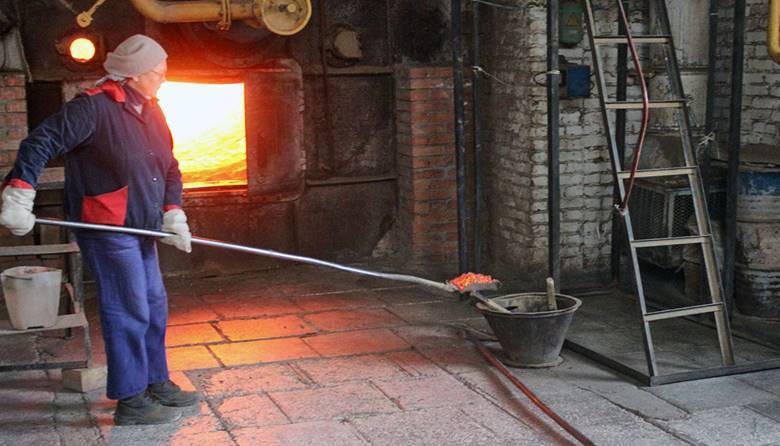
The use of stony rocks of clay or shale as a raw material leads to the use of this method. The method consists in performing the following actions:
- crushing of raw materials on a powerful crushing apparatus, which helps to obtain granules with a size of 1 to 20 mm;
- roasting of processed raw materials in a rotary kiln;
- cooling the composition and subsequent sorting by grain size.
This is where production ends in most cases. All that remains is to load the substance into bags and send it for sale. Grains are not formed here, giving them a neat look. Therefore, dry fractions can be identified by the uneven edges of each grain.
Wet way

The wet method is implemented as follows:
- raw materials are poured into large containers;
- water is poured into these containers, increasing the moisture content of the mixture to 50%;
- with the help of pumps, the mixture is pumped into large tanks, from which it goes to the furnace;
- in drum ovens, granules are sorted by size, as well as the resulting grains are dried.
The method is very suitable for raw materials that initially have a high moisture content. By adding water and subsequent drying, it is possible to get rid of unnecessary inclusions and obtain a uniform surface of each granule. It should be noted that this method requires more energy consumption, but it helps to get a better quality product.
Plastic way

This technology for the production of expanded clay is used if the raw material has a moisture content of less than 30%. The clay is passed through solid rollers, which grind the granules to obtain fractions with a grain size of 5 to 10 mm. Then everything is put into drying drums and rolling machines, which give each grain the correct oval shape.
After that, the whole mixture is fired in ovens at a temperature of about 1000 degrees. Firing is carried out in drum kilns, the drums of which are spinning all the time. Finished granules are transferred to cooling units and dried. And only after that all expanded clay is sorted by granule size.
Powder-plastic method
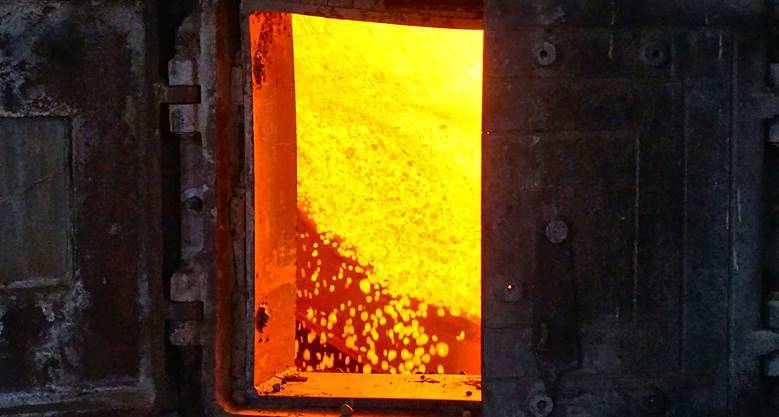
This method involves preliminary grinding the clay to a powdery state. The powder is mixed with water, thus obtaining a homogeneous mass. Then, from this mass, granules of the correct shape are formed and the same is carried out as in the previous methods. The fraction is fired and dried. This method helps to create the tidiest mixes that can be applied. However, you have to pay more for high-quality granules, since there are additional steps in the method.
The powder-plastic method requires the use of well-processed raw materials, since otherwise the quality of the granules will be significantly reduced.
Equipment for the production of expanded clay
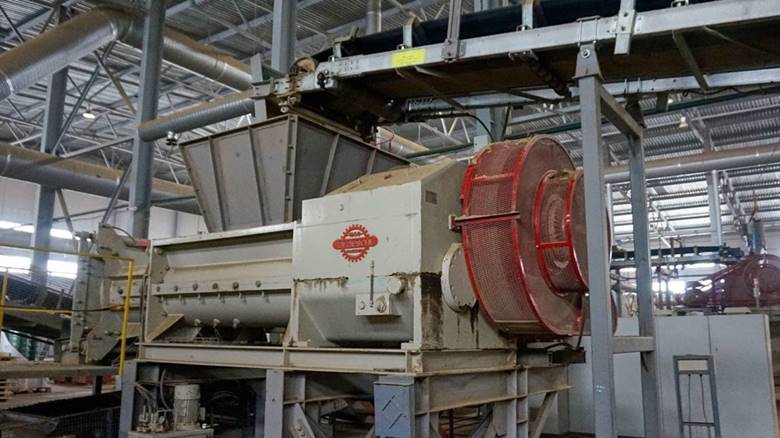
A large number of equipment is involved in the production of expanded clay, each of which contributes to obtaining a high-quality mixture. The main devices include:
- different rippers;
- drilled rollers;
- clay mixers;
- kilns for roasting;
- drums for drying and sorting;
- conveyors;
- conveyors;
- trays, etc.
Industrial production includes many devices that help you quickly handle large volumes of material.
Since almost any method of shaping involves primary processing, crushing devices, consisting of solid blades that move towards each other, will definitely be needed. In this case, all materials falling between them are cut and crushed. If it is envisaged to add special mixtures to improve the swelling, then it is necessary to prepare the mixing plant.
Firing kilns are different, but most often they work on the same principle, evenly heating all substances that get inside.
Making expanded clay at home
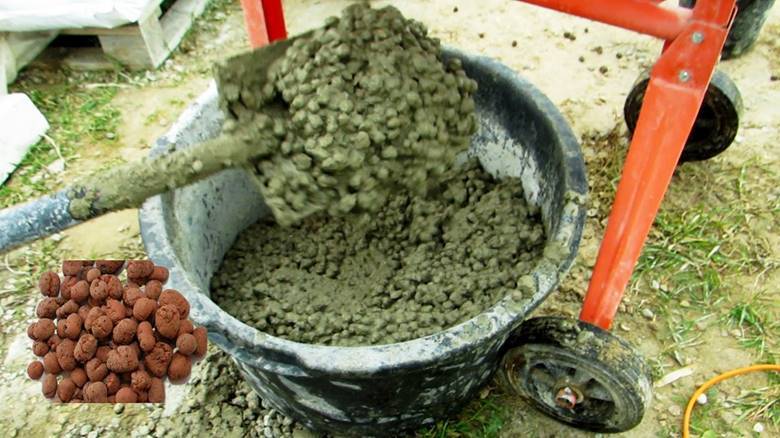
Household people often ask the question: is it possible to produce expanded clay at home? It will be quite difficult, but such a possibility does exist. Thanks to mini-factories with an oven and dryer, you can independently obtain fractions with sizes up to 5 mm. Such plants operate on gas or coal fuel.
Often, in addition to such plants, small crushing plants are purchased, which help to obtain a homogeneous mass without large stones. In general, if there is a desire and the necessary drawings, all equipment can be made independently.
Home factories produce expanded clay sand from poor quality material. Expanded clay with certain properties can also be obtained from ash from coal. At the same time, there is an opportunity to significantly save money, while reducing the amount of waste from activities.
As a result, the energy and money costs for the production of expanded clay may seem too high in comparison with the result obtained. However, everything will pay off, since the filler is used in different areas of life, and especially in construction.
What is expanded clay used for in construction
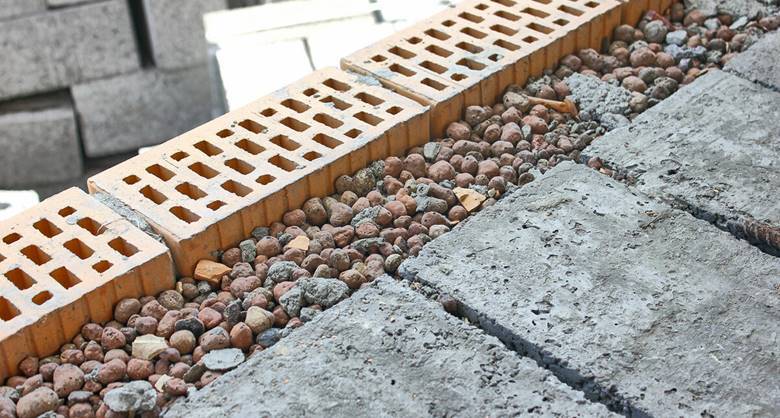
Expanded clay is a versatile material that is widely used in various fields. At the same time, no replacement has been found for it yet. You can, of course, replace it with the latest materials, but they will be much more expensive than expanded clay.
The clay mixture is used both during the construction of buildings and during renovation work. Its heat and sound insulation properties make expanded clay a very popular material. Mixes are widely used to create a special cement with insulating qualities.
With the help of expanded clay, you can carry out the following work during the construction phase:
- concrete or dry screed;
- giving the foundation of the building the necessary properties and characteristics;
- shaping concrete with less weight;
- insulation of walls, floors, foundations, etc .;
- soundproofing of the building.
Expanded clay helps to reduce the depth of the foundation by half, protect the surrounding soil from freezing and keep all windows and doors at the required level. After the construction of the building, expanded clay will help regulate the level of humidity in the house and prevent the appearance of various foci of freezing.
Important! The expanded clay mixture is perfect for keeping the water supply network from the effects of low temperatures.
Expanded clay can be used as a heater on floors, walls or attics. During construction, this helps to take advantage of:
- lighten the load on the walls, since expanded clay weighs less than concrete;
- resistance to aggressive environments;
- the availability of the material will help you spend money on something else;
- thermal conductivity to ensure stable retention of the required temperature inside the room;
- increases the service life of wooden building materials;
- environmental Safety.
When insulating reinforced concrete floors, a mixture of cement with expanded clay is used, and for wooden structures, expanded clay is used in dry form. All this contributes to a significant decrease in thermal conductivity and an increase in service life.
Wall insulation is carried out using expanded clay concrete, which is lighter than concrete blocks. Walls made of expanded clay concrete blocks help maintain the temperature inside the building. In any construction, it is foreseen to leave an empty space for placing insulating expanded clay in it.

Expanded clay is suitable for floor insulation. This is an economical and at the same time very functional way. There is no need for possession of rare skills and knowledge. It is enough to know the basics of laying insulation.
Expanded clay should be poured onto gravel or sand, and then poured with concrete over the installed reinforcement. The structure is heavy, but not so heavy as to make the earth sag under the weight. At the same time, a warming effect is also created. But this method is logical only for houses, since in apartments the insulation is carried out in a different way.

